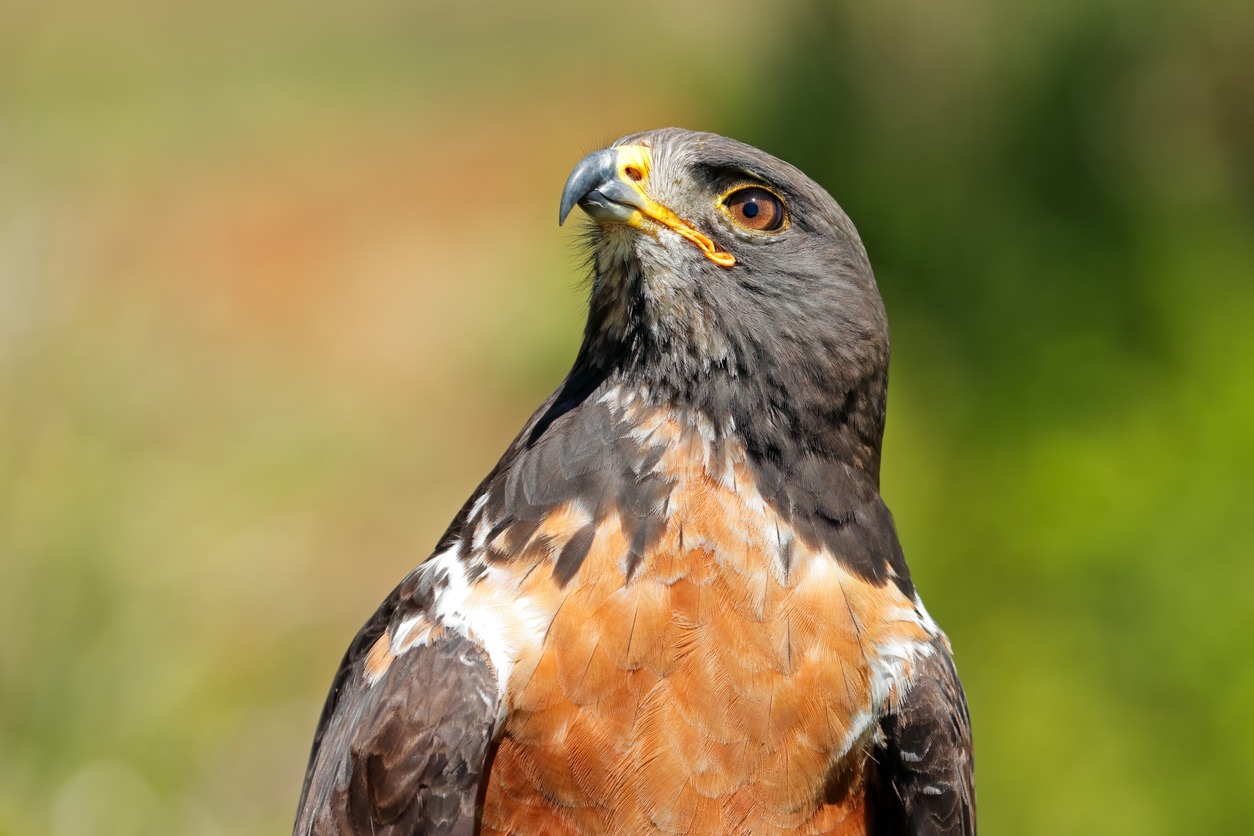The Jackal Buzzard, also known as Buteo rufofuscus, is a common African bird of prey. This bird species belongs in the family Accipitridae, together with hawks, harriers, eagles, and kites.
The Jackal Buzzard was first described by Reformed (Calvinist) pastor and naturalist Johann Reinhold Forster back in 1798. Three main subspecies of Jackal Buzzard have been recognized:
- r. rufofuscus – this is the nominate South African form
- r. augur – Found in Ethiopia, Uganda, and Southern Sudan westwards to the eastern Congo.
- r. archeri – Occurs solely in Somalia
Despite the Jackal Buzzard’s limited range, their population is at a stable rise. Therefore, the International Union for Conservation of Nature (IUCN) Red List categorized them as Least Concern.
Its seven levels of classification are as follows:
Kingdom: Animalia
Phylum: Chordata
Class: Aves
Order: Accipitriformes
Family: Accipitridae
Genus: Buteo
Species: B. rufofuscus
The physical characteristics of a Jackal Buzzard
An adult Jackal Buzzard’s biometrics are as follows:
Length: 45-55 cm
Wingspan: 130-132 cm
Weight: 865-1080 g
A common Jackal Buzzard possesses a black head, throat, neck, and upperparts. Located on the upperwings are black flight feathers, which are narrowly barred pale grey and colored with bold black tips. Its tail is rufous.
On the underparts, the breast is rufous with white upper edge that comes in contrast with its black throat and markings on the lower edge. Underwing-coverts, lower breast, and belly are black with thin greyish-white bars. Vents, thighs, and flanks are either rufous or white. Its bill is black with yellow cere, legs and feet are yellow. while the eyes are dark red-brown.
Both male and female Jackal Buzzards share the similar characteristics, although the latter is heavier than the former. Juveniles have browner plumage, dark brown upperparts with pale-edged feathers along the nape. Its underparts appear paler, mostly rufous-brown, and its tail is brown.
The distribution and habitat of Jackal Buzzards
Jackal Buzzards are native to southern Africa, particularly in African countries such as South Africa, southern and central Namibia, Swaziland, Lesotho, southern Mozambique, southern Botswana, and Zimbabwe. It inhabits most of South Africa, although absent in the northern central region.
They dwell in the mountains, low rocky outcrops, sea level, high mountains, and hilly habitats. Jackal Buzzards usually occur in Drakensberg Mountains in South Africa and Lesotho, as well as in the small hills of Namib Desert.
The behavior of Jackal Buzzards
This bird of prey has a call of a sharp, bark-like “weeah ka-ka-ka or kyaah-ka-ka-ka.” A female Jackal Buzzard’s voice is deeper than the male’s, and its voce is reminiscent of that of Black-backed Jackal’s and American Red-tailed Hawk’s calls. The call has a lower tone than that of a Forest Buzzard, and is very different from the call of an Augur Buzzard.
Pairs of Jackal Buzzards usually perform noisy aerial displays, even outside the breeding season. They are sedentary in its range, but juveniles and some adults may migrate to open plains according to prey availability. They fly in deep, firm strokes and soar with rocking flight.
Jackal Buzzards are commonly monogamous and territorial solitary nesters, although some accounts suggest females breed with two males. During the breeding season, both sexes build large stick nests in a tree, tree base, or crag. These nests are usually reused for the next breeding season. Egg-laying season takes place between May and November, and the peaking season varies according to range. The female Jackal Buzzard lays 1-3 bluish-white eggs with brown markings, which will be incubated by the female alone for 39-40 days. Once hatched, the chicks will appear white. The eldest chick usually kills the younger sibling. The male Jackal Buzzard will bring food to the nest, and the female will feed the young.
The diet of a Jackal Buzzard
This bird species feeds on small reptiles, insects, mammals, carrion, and other birds. A Jackal Buzzard will perch on trees, rocks, or poles in open areas, where it usually spends time searching for prey.
The Jackal Buzzard also hunts for prey while hanging or soaring in strong winds. Once it locates a prey, it will immediately descend to catch it by intercepting the bird in the air. During the winter season, it feeds on carcasses and animals killed along the roads.
BOTSWANA BIRDS | SOUTH AFRICA BIRDS
NAMIBIA BIRDS | ZAMBIA BIRDS | ZIMBABWE BIRDS
